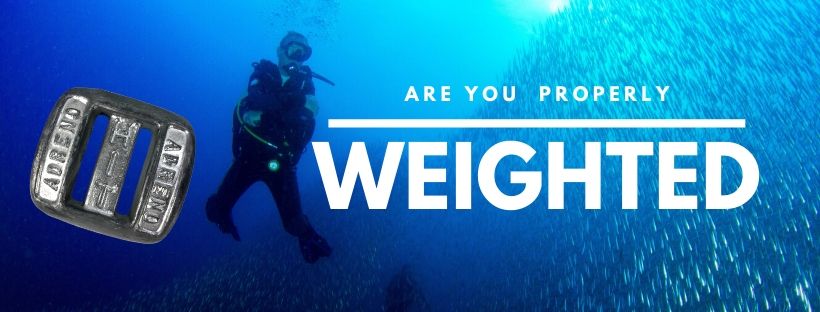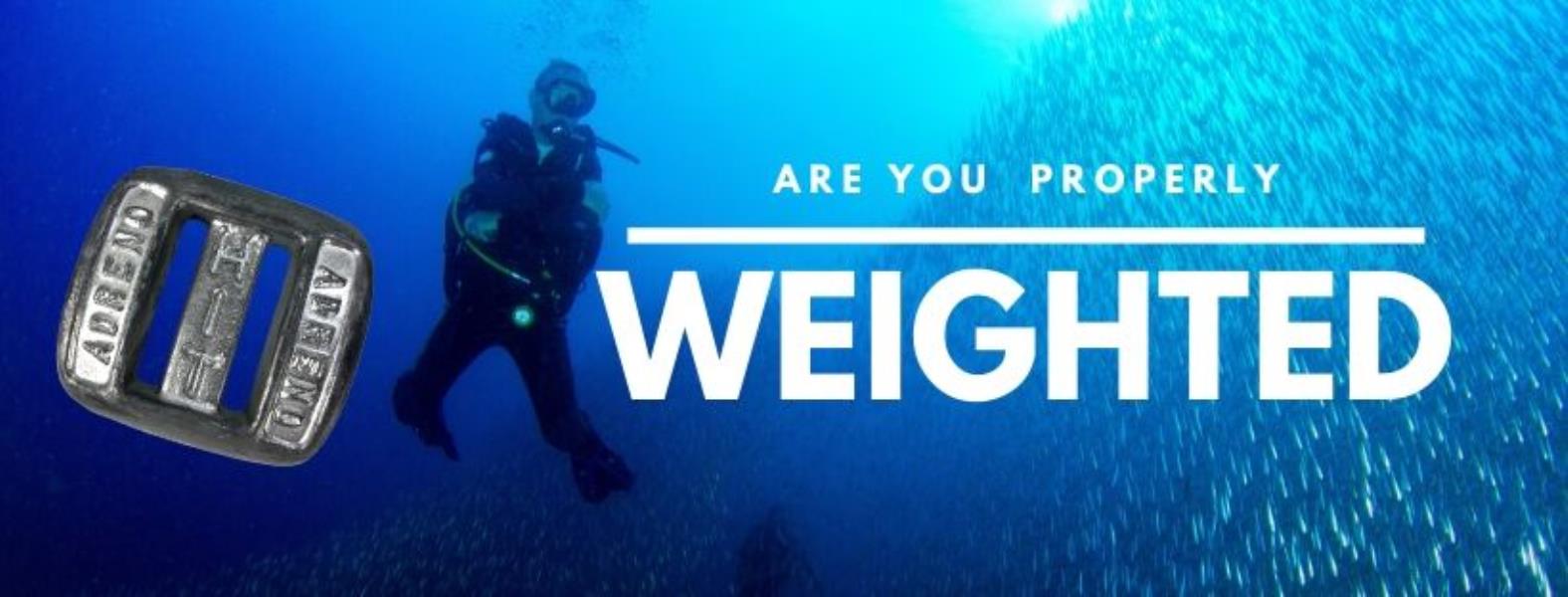-

are-you-properly-weighted-for-oyur-dive_orig
Good buoyancy control is a crucial part of diving which allows you to dive safely, while avoid damaging the reef or your equipment. When properly weighted, you will consume less air, and generally enjoy your dive more.
Although mastering this art requires time and practice, a very good place to start is with appropriate weighting!
How do you know if you took way too much weigh for your dive?
- At the surface, with a fully inflated BCD (Buoyancy Control Device), do you need to kick constantly to keep your head above water?
- While descending do you have trouble controlling your speed? Do you have trouble equalizing because you are sinking like a stone?
- At the bottom, do you have to add a lot of air to your BCD?
- Do you have a hard time maintaining a horizontal position?
- Does it take a lot of energy to move? Do you frequently have bottom contact when you dive?
- Do you often have a Yo-Yo profile, going up and down frequently? Do you have to regularly add and remove air from your BCD?
If your answer is yes to one of these question you have probably way too much weight on your weight-belt or in your weight-pockets!!!
How do you know if you are underweighted?
- Do you have trouble descending? Even with your lungs and BCD fully emptied?
- Do you have trouble staying at the bottom without any air in your BCD?
- Do you tend to float up towards the surface?
- Do you find it impossible to remain stable during your safety stop?
If your answer is yes to one of these question you have probably way too little weight on your weight-belt or in your weight-pockets!!!
How to find the right amount of weight you need?
In theory:
With a 3mm wetsuit in salt water, with a 12L aluminum tank, you will need around 5% of your body weight.
With a 5mm wetsuit in salt water, with a 12L aluminum tank, you will need around 8% of your body weight.
Example : Diver of 75kg with a 3mm wetsuit, 12L Alu tank = 4kg
Diver of 60kg with a 5mm wetsuit 12L Alu tank = 5kg
Of course, adapt it depending if it’s salt of fresh water, aluminum or steel tank, 12L or 15L tank, and most of all the experience of every diver!
- Is 0,75kg negatively buoyant when full
- Is 1,25kg positively buoyant when reached 35bar
A 12L steel tank :
- Is 4kg negatively buoyant when full
- Is still 1,3kg negatively buoyant when empty
So, if you dive with a steel tank, you will need less weight than with Aluminum tank (about 2,5kg). So choose Steel tank when possible if you are diving with a thick exposure suit.
Remove 1 to 2 kg if using a steel tank
With a 3mm wetsuit in salt water, with a 12L aluminum tank, you will need around 5% of your body weight.
With a 5mm wetsuit in salt water, with a 12L aluminum tank, you will need around 8% of your body weight.
Example : Diver of 75kg with a 3mm wetsuit, 12L Alu tank = 4kg
Diver of 60kg with a 5mm wetsuit 12L Alu tank = 5kg
Of course, adapt it depending if it’s salt of fresh water, aluminum or steel tank, 12L or 15L tank, and most of all the experience of every diver!
- Difference between steel and aluminum tank
- Is 0,75kg negatively buoyant when full
- Is 1,25kg positively buoyant when reached 35bar
A 12L steel tank :
- Is 4kg negatively buoyant when full
- Is still 1,3kg negatively buoyant when empty
So, if you dive with a steel tank, you will need less weight than with Aluminum tank (about 2,5kg). So choose Steel tank when possible if you are diving with a thick exposure suit.
- If you dive with a 15L tank
Remove 1 to 2 kg if using a steel tank
- Difference between fresh water and salt water
If you are used to dive in salt water, remove 2 to 3 kg in fresh water.
There are also differences in the salinity of each ocean. Ask the local guides whenever you go to a new destination...



Load more comments